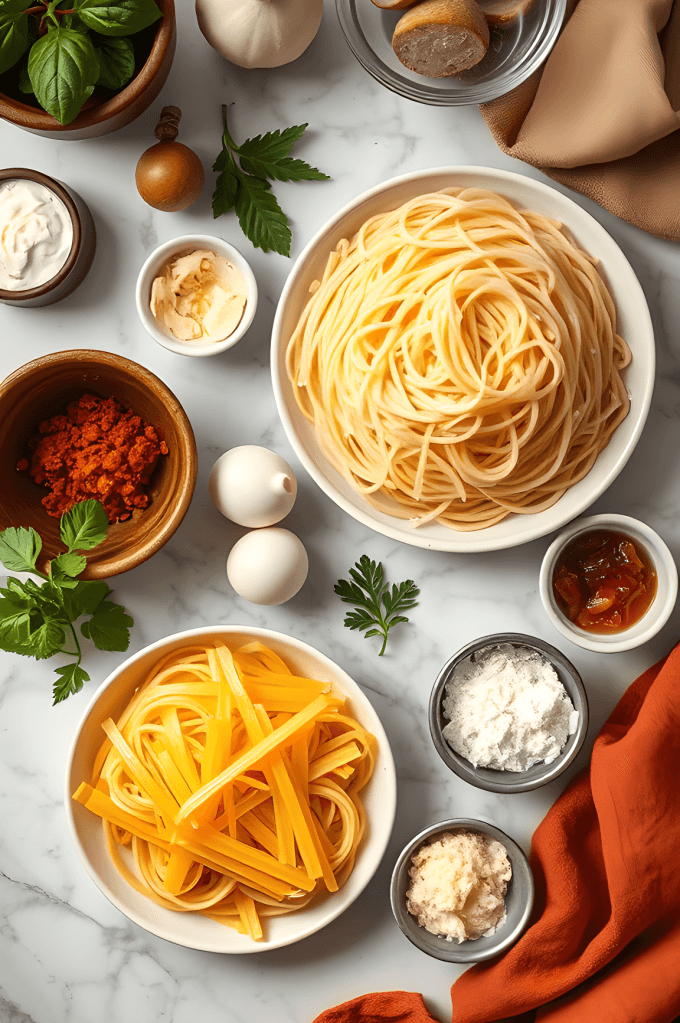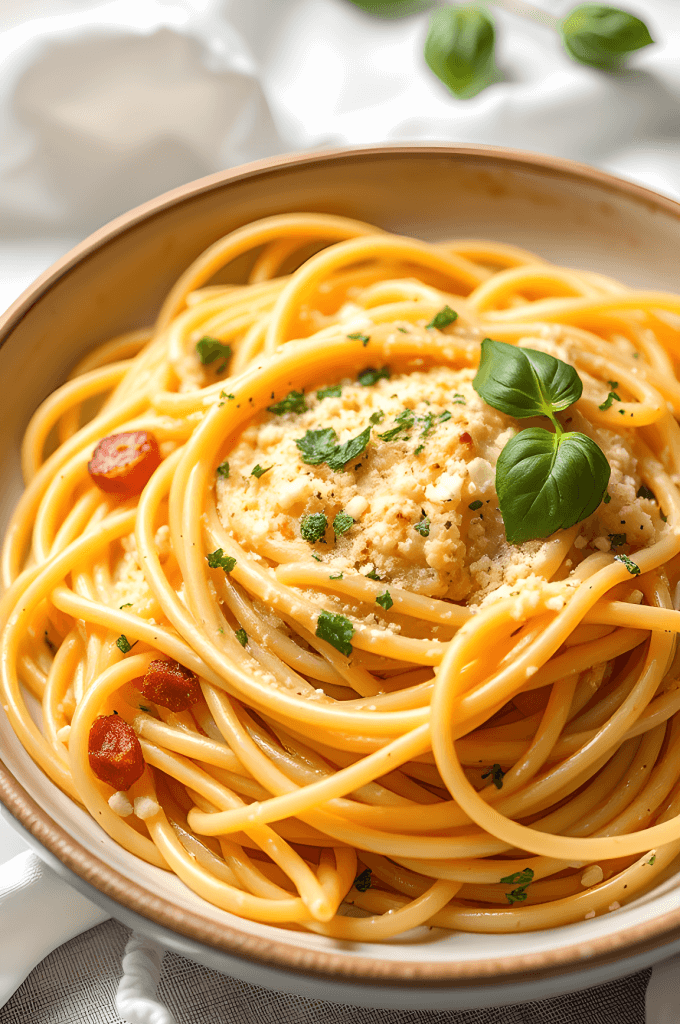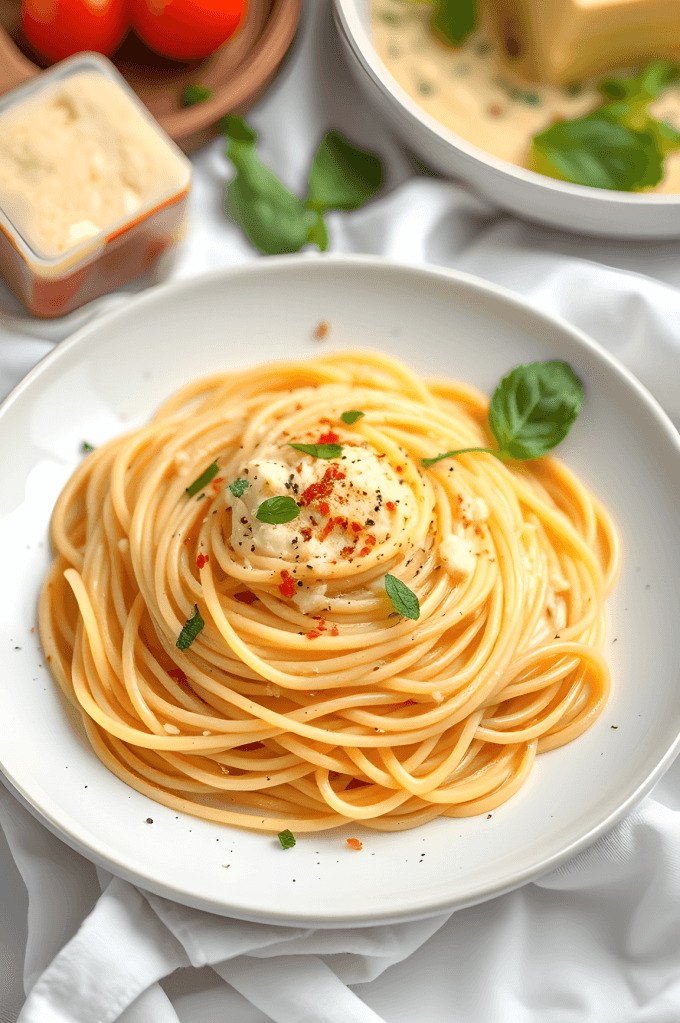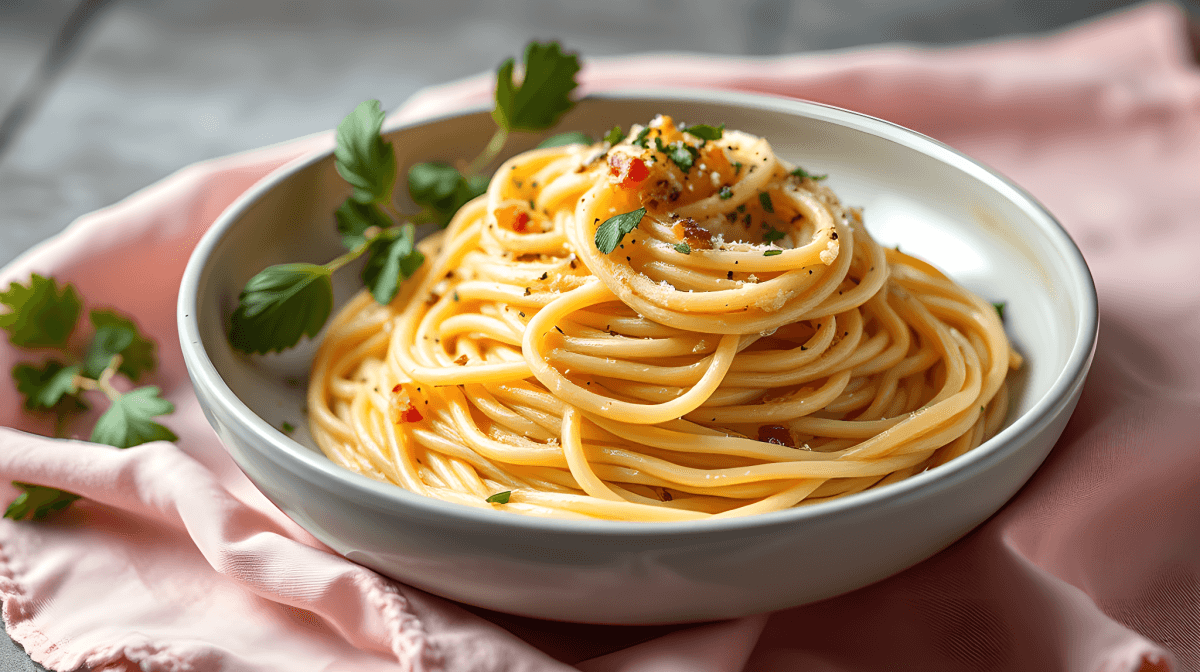Spaghetti Carbonara: A Timeless Roman Classic
Spaghetti Carbonara is much more than just a simple pasta dish—it is an iconic representation of Roman cuisine, filled with rich flavors, simple ingredients, and a touch of magic. Imagine the creamy sauce that forms from eggs, the smoky goodness of Guanciale, and the sharp, tangy kick of Pecorino Romano. It’s a comfort food that makes you feel like you’re dining at a cozy trattoria in Rome, no matter where you are.
When I was growing up in Italy, meals like Carbonara were a symbol of family and togetherness. It’s the type of dish that becomes more than just food—it becomes a memory. I learned to make it from my grandmother, who always emphasized that the simplest dishes are often the most beautiful, as long as you use fresh, high-quality ingredients. The best Carbonara, she would say, doesn’t need much—just the right technique and the best ingredients.
As we dive into this recipe, let’s explore the rich history of Spaghetti Carbonara, its ingredients, and how you can master the perfect version of this classic.
Ingredients for Spaghetti Carbonara
While Carbonara has only a handful of ingredients, the magic lies in choosing the finest versions of each. For this recipe, we will focus on the classic ingredients used in the traditional Roman preparation.
Main Ingredients:
- 400g Spaghetti
This is the most traditional pasta choice for Carbonara, though you can substitute with other types like Rigatoni or Fettuccine. But keep in mind that the long strands of spaghetti allow the sauce to coat each piece perfectly. - 150g Guanciale
Guanciale (Italian cured pork cheek) is essential to this dish. Its rich flavor and melt-in-your-mouth texture elevate the sauce to a whole new level. If you can’t find Guanciale, high-quality pancetta or bacon can serve as alternatives, though they will not deliver the same depth of flavor.
Pro Tip: Look for Guanciale at Italian delis or specialty food stores. - 4 Large Eggs
These form the creamy base of the sauce. Fresh eggs at room temperature work best as they will emulsify better with the hot pasta. Always aim for free-range eggs for the best texture and flavor. - 100g Pecorino Romano Cheese, finely grated
This salty, sharp cheese is one of the defining elements of Carbonara. You can substitute with Parmesan if needed, but Pecorino’s tanginess gives Carbonara its authentic Roman flavor.
Pro Tip: Always grate your cheese fresh. Pre-grated cheese can alter the flavor and texture of the dish. - Freshly Ground Black Pepper
Black pepper is a key ingredient in Carbonara, providing a subtle heat that balances the richness of the sauce. Don’t skimp on it! The pepper is traditionally freshly ground for an extra punch. - Salt
You’ll need to salt your pasta water generously to season the pasta. Don’t add salt to the sauce, as the Guanciale and Pecorino already bring plenty of saltiness to the dish.

Instructions for Making Spaghetti Carbonara
Making Spaghetti Carbonara is all about timing. The pasta, the eggs, and the Guanciale need to come together at the right moment to create that perfect, creamy sauce without scrambling the eggs.
Step 1: Preparing the Pasta and Guanciale
- Boil the Spaghetti
Start by bringing a large pot of salted water to a boil. The rule of thumb for salting pasta water is about 1 tablespoon of salt per liter of water. Add the spaghetti and cook according to the package instructions for al dente pasta (usually around 9 minutes). The pasta should be firm to the bite but tender in texture.
Pro Tip: Save a cup of pasta water before draining. This starchy water will be used to create the perfect creamy sauce. - Crisp the Guanciale
While the pasta cooks, heat a large pan over medium heat. Add the diced Guanciale and cook, stirring occasionally, until it becomes crispy and golden brown, about 5–7 minutes. The fat will render out, creating a fragrant, flavorful base for the sauce. Remove the pan from the heat once the Guanciale is crispy.
Pro Tip: Don’t rush this step. The fat is crucial for flavor, so cook it gently to achieve that perfect crispiness.
Step 2: Make the Egg Mixture
In a separate bowl, whisk together the eggs, Pecorino Romano, and a good amount of freshly ground black pepper. You want the mixture to be smooth and slightly thick. If it seems too thick, you can add a splash of the reserved pasta water to loosen it up. The mixture should be creamy, not runny, to give the sauce its desired consistency.
Pro Tip: The more freshly grated cheese you use, the creamier your sauce will be.
Step 3: Combine Pasta, Guanciale, and Egg Mixture
Once the pasta is al dente, transfer it directly to the pan with the Guanciale (make sure the pan is off the heat to avoid scrambling the eggs). Toss the pasta in the rendered fat, letting it absorb all those rich flavors.
Immediately pour the egg mixture over the pasta, tossing quickly to coat the pasta and evenly distribute the sauce. The residual heat from the pasta will cook the eggs and form a velvety, creamy sauce. If the sauce seems too thick, add a bit more pasta water, a tablespoon at a time, until it reaches your desired consistency.
Pro Tip: Keep the pan off the heat when adding the egg mixture to avoid turning the eggs into scrambled eggs. The heat from the pasta is enough to cook the eggs perfectly.
Step 4: Serve and Enjoy
Plate the pasta, making sure to toss it gently to keep the sauce nice and creamy. Finish by grating more Pecorino Romano on top, and add a few extra twists of fresh black pepper. Serve immediately while it’s still warm, paired with a glass of crisp white wine or a refreshing Italian red.
Pro Tip: If you like a bit of crunch, you can top it with toasted breadcrumbs for extra texture.

History of Spaghetti Carbonara: The Debate Over Origins
Spaghetti Carbonara is one of those dishes that has a rich history full of stories, some of which are harder to verify than others. But what is clear is that this dish is undeniably Roman in origin.
One popular theory suggests that Carbonara was created by Italian charcoal workers (called carbonari) in the Apennine mountains. They would prepare this simple dish using the ingredients they had on hand—pasta, eggs, and pork. The Guanciale was a staple in their diet because it could be cured and stored for long periods.
Another theory ties the dish to American soldiers during World War II. Some believe that when the U.S. troops arrived in Italy, they brought bacon and powdered eggs, which were then incorporated into the dish by local cooks. Over time, this version evolved into the Carbonara we know today, although the traditional recipe does not include cream.
What’s important is that Carbonara is deeply rooted in Roman culinary traditions and is still one of the most beloved pasta dishes in Italy.

Common Mistakes to Avoid When Making Spaghetti Carbonara
Even though the recipe is simple, there are a few pitfalls that can lead to a less-than-perfect result. Here are some tips for making sure your Spaghetti Carbonara is always top-notch:
- Avoid Cream: Traditional Carbonara is made with eggs and cheese, not cream. Creamy Carbonara is a common mistake in many restaurants outside of Italy, but the true beauty of this dish is its simplicity.
- Don’t Overcook the Guanciale: Guanciale should be crispy but not burnt. Overcooking it can turn it bitter. Aim for a golden-brown color with a slight crunch.
- Don’t Scramble the Eggs: The key to a silky-smooth sauce is tossing the eggs with the pasta off the heat. The heat of the pasta is sufficient to cook the eggs, creating a creamy sauce without any scrambled bits.
- Use Fresh Ingredients: The flavor of your Carbonara depends on the quality of your ingredients. Use freshly grated Pecorino Romano and Guanciale for the best taste.
Variations of Spaghetti Carbonara
While the classic recipe is delicious, you can play around with some variations to suit your tastes:
- Vegetarian Carbonara: If you’re looking for a vegetarian version, you can swap the Guanciale for sautéed mushrooms or roasted vegetables. Pecorino Romano will still give it that sharp, salty flavor.
- Carbonara with Chicken: For an extra protein boost, you can add grilled or sautéed chicken breast to the pasta. It’s not traditional, but it can be a delicious variation if you want to make the dish a bit more filling.
- Spicy Carbonara: For a kick, try adding a small amount of chili flakes to the Guanciale as it cooks. The spiciness complements the creamy sauce beautifully.
Conclusion: A Dish to Remember
Spaghetti Carbonara is the epitome of Roman comfort food, rich in flavor yet simple in preparation. Whether you’re cooking it for a weeknight dinner or serving it to guests, this dish will always impress. Remember, the beauty of Carbonara lies in its simplicity, so take care in choosing the finest ingredients and follow the steps carefully to achieve that creamy, luxurious sauce. Buon appetito!

